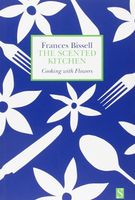Advertisement
Elderflower and Hawthorn Blossom
Appears in
Published 2012

‘Some persons hold themselves entitled, after two or three times receiving a piece of shortbread and a glass of elderflower wine, to ask the lady who has given them such refreshment, in marriage.’
M. Lindsay
It never ceases to delight me that such lively and attractive blossoms are to be found amongst the dull leaves and rank twigs of elder trees. Every May I keep watch for the first lacy umbels on the trees on Hampstead Heath, and a few days later I am out foraging with a couple of bags and a walking stick, an essential tool because the creamier, denser panicles always seem to be higher up, turning towards the sun. I fill the bags loosely so as not to bruise the delicate blooms. Before putting them in the bag, I shake the blossoms lightly to remove the larger wild life. Smaller creepy-crawlies will, I’m afraid, have to take their chances and disappear before the syrup-boiling stage, as I never wash the blossoms, but just give them another light shake once I get them home, because I am convinced that dousing them in water removes some of their fragrance. If I have inadvertently picked any flower heads that are really infested with bugs, I of course discard them, and when I make elderflower syrup, jelly or cordial I always strain it through a cloth-lined sieve, which takes care of any tiny ants or other insect life that might still be clinging to the flowers, and also of the pollen, which makes the liquid cloudy.

